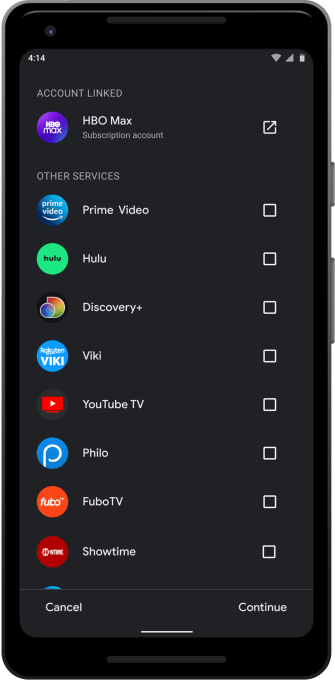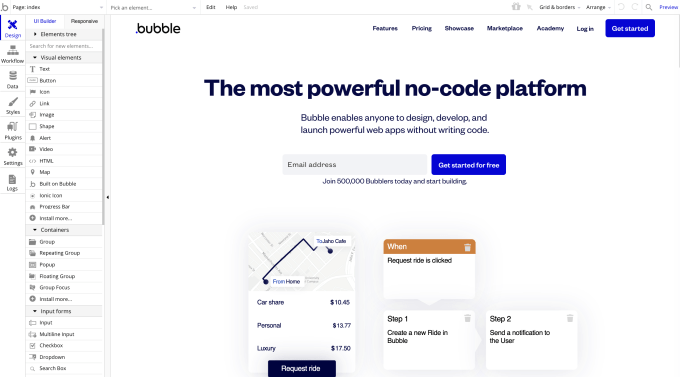TC
Auto Added by WPeMatico
Auto Added by WPeMatico
Here’s another edition of “Dear Sophie,” the advice column that answers immigration-related questions about working at technology companies.
“Your questions are vital to the spread of knowledge that allows people all over the world to rise above borders and pursue their dreams,” says Sophie Alcorn, a Silicon Valley immigration attorney. “Whether you’re in people ops, a founder or seeking a job in Silicon Valley, I would love to answer your questions in my next column.”
Extra Crunch members receive access to weekly “Dear Sophie” columns; use promo code ALCORN to purchase a one- or two-year subscription for 50% off.
Dear Sophie,
My startup is desperately recruiting, and we see a lot of engineering candidates on H-1Bs. They’re looking for H-1B transfers and green cards. What should we do?
— Baffled in the Bay Area
Dear Baffled,
Yes, you should absolutely sponsor international talent for green cards! Listen to my podcast in which I discuss how to hire international professionals who are already in the United States by transferring their H-1B visa and using green cards as a benefit to attract and retain them.
The severe shortage of tech talent currently in the U.S. is prompting professionals to negotiate better compensation packages, and companies are increasingly using green card sponsorship as a benefit to attract and retain international talent.
Companies need to offer green card sponsorship to remain competitive. In fact, Envoy’s 2021 Immigration Trends Report found that 74% of employers said they have sponsored an individual for permanent residence (a green card), which is the highest percentage in the six years Envoy has asked this question in its annual survey. Rather than waiting until the last possible moment to sponsor an H-1B visa holder for a green card, 58% of employers say they are starting the process with the employee’s first year at the company on an H-1B visa. Most employers — 96% — said that sourcing international talent is important to their company’s talent acquisition strategy.

Image Credits: Joanna Buniak / Sophie Alcorn (opens in a new window)
Sponsoring international talent for a green card is a way for companies to show they invest in and prioritize their employees and are willing to make a long-term commitment to a prospective employee. Employers can further distinguish themselves by offering to cover expenses for green card applications for a spouse and children, as well as a work permit application for a spouse.
Employers should also consider paying for an employee’s marriage-based green card as a third-party payor, particularly since marriage-based green cards take about one-third of the time and one-third of the investment compared to employment-based green cards. What’s more, most marriage-based green cards are not subject to annual quotas.
Because most U.S. embassies and consulates abroad remain closed for routine visa processing due to COVID-19, most employers are hiring international talent who are already in the United States on an H-1B sponsored by another employer. In these situations, an employer must file for an H-1B transfer for the prospective employee. Take a look at a previous Dear Sophie column for more details on the H-1B transfer process.
The questions that employers ask me most often about the H-1B transfer process include:
Powered by WPeMatico
Cairo and Dubai-based ride-sharing company Swvl plans to go public in a merger with special purpose acquisition company Queen’s Gambit Growth Capital, Swvl said Tuesday. The deal will see Swvl valued at roughly $1.5 billion.
Swvl was founded by Mostafa Kandil, Mahmoud Nouh and Ahmed Sabbah in 2017. The trio started the company as a bus-hailing service in Egypt and other ride-sharing services in emerging markets with fragmented public transportation.
Its services, mainly bus-hailing, enables users to make intra-state journeys by booking seats on buses running a fixed route. This is pocket-friendly for residents in these markets compared to single-rider options and helps reduce emissions (Swvl claims it has prevented over 240 million pounds of carbon emission since inception).
After its Egypt launch, Swvl expanded to Kenya, Pakistan, Jordan and Saudi Arabia. The company also moved its headquarters to Dubai as part of its strategy to become a global company.
Swvl offerings have expanded beyond bus-hailing services. Now, the company offers inter-city rides, car ride-sharing, and corporate services across the 10 cities it operates in across Africa and the Middle East.
Queen’s Gambit, the women-led SPAC in charge of the deal, raised $300 million in January and added $45 million via an underwriters’ overallotment option focusing on startups in clean energy, healthcare and mobility sectors.
The statement also mentions a group of investors — Agility, Luxor Capital and Zain Group — which will contribute $100 million through a private investment in public equity, or PIPE.
Per Crunchbase, Swvl has raised over $170 million. From an African perspective, Swvl features as one of the most venture-backed startups on the continent. The company has been touted to reach unicorn status in the past and will when this SPAC merger is completed.
The company will aptly trade under the ticker SWVL. The listing will make it the first Egyptian startup to go public outside Egypt and the second to go public after Fawry. It will also make the mobility company the largest African unicorn debut on any U.S.-listed exchange, beating Jumia’s debut of $1.1 billion on the NYSE. In the Middle East, Swvl joins music-streaming platform Anghami as the second startup to go public via a SPAC merger.
Swvl had annual gross revenue of $26 million in 2020, according to the statement, and the company expects its annual gross revenue to increase to $79 million this year and $1 billion by 2025 after expanding to 20 countries across five continents.
On why Queen’s Gambit picked Swvl for this deal, Victoria Grace, founder and CEO, said in a statement that the company fit the profile of what she was looking for: “a disruptive platform that solves complex challenges and empowers underserved populations.”
“Having established a leadership position in key emerging markets, we believe Swvl is ready to capitalize on a truly global market opportunity,” she added.
In May, TechCrunch wrote that SPACs didn’t target African startups for several reasons, including a lack of global appeal and private capital and market satisfaction. Judging by Grace’s comments, Swvl has that global appeal and is ready to venture into the public market despite being in operation for just four years.
Powered by WPeMatico
When co-founders Songe LaRon and Dave Salvant first began barbershop tech platform Squire in 2016, they leaned in: The duo bought a barbershop in New York City’s Chelsea neighborhood to see firsthand how the business worked. For one year, the co-founders religiously worked at the shop, now owned by a larger barbershop chain, handling every bit of the business (except cutting hair).
Five years later, the co-founders view that experience as a key moment in the history of Squire, now a 175-person company with a tech platform used by over 2,000 shops across three continents. After last raising a Series C in December and tripling its valuation, Squire announced today that it has raised a $60 million round led by Tiger Global.
And, it tripled its valuation, again. Off of 300% year-over-year revenue growth, the New York startup is now valued at $750 million. It’s a massive uptick: A little over a year ago, Squire was valued at $75 million.
Like many startups these days, Squire wasn’t searching for capital when Tiger Global, which participated in its Series B and C rounds, offered to lead its next financing. The startup has only spent 10% of its previous round, a $45 million equity round, and now has tens of millions more in the bank. Ultimately, its decision to bring on more capital is so it can expand in the U.K. and Canada more aggressively — even in the wake of early-stage competitors like Boulevard. Squire’s dry powder also puts the co-founders in a position to acquire companies, a strategy that Salvant is into and plans to be “aggressive about.”
Squire also announced today the official launch of a product that has been in the roadmap since inception: Squire Capital, a money management platform with tools tailored to the needs of barbershop operations, such as instant payments. Squire’s core business has been more around appointments, loyalty programs and the installment of contactless payment. Now, a fintech layer aims to offer a more niche service than current financial services heavyweights like Square or Paypal.
Fintech is a “natural next frontier” for Squire, Salvant said, because the startup already has deep insights into how its businesses operate and how they process sales; now, it wants to add another service so it can offer a more holistic experience to them.
Squire Capital was built with Bond, a venture-backed fintech infrastructure startup that aims to help enterprise operations launch their own banking products. After experimenting with a $15 million debt financing arm around the time of its Series C, Squire isn’t offering loans at this time, hoping to find a better way to scale offerings in the future.
Squire is en route to becoming a historical and unfortunately still rare Black-led unicorn. Salvant talked about the significance of that feat, noting that this was “the optimal outcome” when founding the company. He hopes that VCs and investors will start to invest more in Black founders with Squire as a data point of a success story.
“Let’s face it, we’re not typical founders, we don’t look the same and we don’t act the same,” Salvant said. “I just want to serve as a lighthouse and this is validation for myself, my co-founder, but more importantly, what’s coming after us.”
Powered by WPeMatico
One of the world’s biggest video game companies is reeling after a state discrimination and sexual harassment suit kicked off a firestorm of controversy within the company. California’s Department of Fair Employment and Housing sued Activision Blizzard last week, alleging that the company fostered a “breeding ground for harassment and discrimination against women.”
Following a combative response to the lawsuit from corporate leadership, a group of employees at Blizzard will stage a walkout, which is planned for Wednesday at 10 a.m. PDT. Most employees at Blizzard continue to work remotely, but walkout participants will gather tomorrow at the gates to the company’s Irvine campus.
“Given last week’s statements from Activision Blizzard, Inc. and their legal counsel regarding the DFEH lawsuit, as well as the subsequent internal statement from Frances Townsend, and the many stories shared by current and former employees of Activision Blizzard since, we believe that our values as employees are not being accurately reflected in the words and actions of our leadership,” the organizers wrote.
In the new statement, they called for supporters to donate to organizations including Black Girls Code, the anti-sexual-violence organization RAINN and Girls Who Code.
Activision Blizzard publishes some of the biggest titles in gaming, including the Call of Duty franchise, World of Warcraft, Starcraft and Overwatch. Blizzard came under Activision’s wing through a 2008 merger and the subsidiary operates out of its own Irvine, California headquarters.
In the suit, the state agency describes a “frat house” atmosphere in which women are not only not afforded the same opportunities as their male counterparts, but are routinely and openly harassed, sometimes by their superiors.
The company pushed back last week in a fiery statement, blaming “unaccountable state bureaucrats that are driving many of the state’s best businesses out of California” for pursuing the lawsuit. Activision Blizzard Executive Vice President Frances Townsend, former Homeland Security adviser to George W. Bush, echoed that aggressive messaging in an internal memo, slamming the lawsuit as a “distorted and untrue picture of our company.”
In an open letter published Monday, the walkout’s organizers condemned Blizzard’s response to the lawsuit’s allegations. “We believe these statements have damaged our ongoing quest for equality inside and outside of our industry,” they wrote. “ … These statements make it clear that our leadership is not putting our values first.”
More than 2,600 employees signed the letter, which demands an end to mandatory arbitration clauses that “protect abusers and limit the ability of victims to seek restitution,” improved representation and opportunities for women and nonbinary employees, salary transparency and a full audit of diversity, equity and inclusion at the company.
On Twitter, streamers, gamers, game devs and former employees expressed support for Wednesday’s walkout under the hashtag #ActiBlizzWalkout, with some calling for a blackout on Activision Blizzard games as a show of solidarity. Others called for streamers to use the walkout time slot to raise awareness about rampant sexual harassment and discrimination in gaming culture at large.
One Blizzard employee shared a photo of the company’s iconic statue depicting an axe-wielding orc, a central feature of its Irvine headquarters. Three plaques displaying corporate values that surround the statue had been covered with paper: “Lead responsibly,” “play nice, play fair,” and “every voice matters.”
Powered by WPeMatico
According to one estimate, Americans call 911 about 240 million times every year.
Sending emergency services to the right location sounds straightforward, but each 911 call is routed through one of thousands of call centers known as public safety answering points (PSAPs).
“Every 911 center is very different and they are as diverse and unique as the communities that they serve,” said Karin Marquez, senior director of public safety at RapidSOS.
One PSAP that serves New York City is a 450,000-square-foot, blast-resistant cube set on nine acres, but you also have “agencies in rural America that have one person working 24/7 and they’re there to answer three calls a day,” Marquez noted.
Founded eight years ago, RapidSOS processes more than 150 million emergencies each year across approximately 5,000 PSAPs. The company’s technology helps call centers integrate requests from cell phones, landlines and IoT devices.
“Its technology is almost certainly integrated into the smartphone you’re carrying and many of the devices you have lying around,” Managing Editor Danny Crichton writes in a four-part series that studies the company’s origins and ensuing success:
Full Extra Crunch articles are only available to members
Use discount code ECFriday to save 20% off a one- or two-year subscription
“I’ve honestly never met a company like RapidSOS with so many signed partnerships,” says Danny, who initially wrote about the firm six years ago.
“It’s closed dozens of partnerships and business development deals, and with some of the biggest names in tech. How does it do it? This story is about how it built a successful BD engine.”
Thanks very much for reading Extra Crunch this week!
Walter Thompson
Senior Editor, TechCrunch
@yourprotagonist

Image Credits: Reinhard Krull / EyeEm (opens in a new window) / Getty Images
The headlines might be littered with mega deals, IPOs and SPACs, but in all likelihood, you will exit your startup via a relatively smaller merger or acquisition, Ben Boissevain writes in a guest column.
“The IPO market is healthy again, but M&A still represents 88% of exits: So far this year, there were 503 IPOs and 5,203 deals,” writes Boissevain, founder of Ascento Capital.
“While it is good to strive for a billion-dollar-plus sale, a successful IPO or a SPAC deal, it is practical to prepare your startup for a smaller transaction.”

Image Credits: Nigel Sussman (opens in a new window)
U.S. edtech company Duolingo bumped up its IPO price range Monday morning, targeting $95 to $100 per share, up from previous guidance of $85 to $95 per share.
“The fact that Duolingo is raising its IPO price range indicates that we are more likely on the path for a strong offering than a weak one,” Alex Wilhelm notes.

Image Credits: VCG (opens in a new window) / Getty Images
Many Extra Crunch readers will not have heard of China’s fastest-growing bottled beverage company: Genki Forest is a direct-to-consumer startup that started selling its sodas, milk teas and other products just five years ago.
Today, its products are available in 40 countries and the company hopes to generate revenue of $1.2 billion in 2021. After closing its latest funding round, Genki Forest is valued at $6 billion.
Industry watchers frequently compare the upstart to giants like PepsiCo and Coca-Cola, but founder Binsen Tang comes from a tech background, having funded ELEX Technology, a social gaming company that found success internationally.
“China doesn’t need any more good platforms,” Tang told his team in 2015, “but it does need good products.”
Leveraging China’s robust distribution network, lighting-fast manufacturing capabilities and a vast pool of data that enables holistic digitization, Genki Forest sells more than 30% of its products online.
“Everything feels right about the company,” said VC investor Anna Fang. “The space, the founder, the products and the back end … they exemplify the new Chinese consumer brand.“

Sequoia’s Mike Vernal joined us on TechCrunch Early Stage: Marketing and Fundraising to discuss how founders should approach product-market fit, with a specific focus on tempo.
It doesn’t mean fast in the kind of uncontrolled, reckless, crashing sense. It means fast in a sort of consistent, maniacal, get-a-little-bit-better-each-day kind of way. And it’s actually one of the top things that we look for, at least when evaluating a team: How consistently fast they move.

Image Credits: Nigel Sussman (opens in a new window)
Alex Wilhelm spent the end of last week and the beginning of this one looking at Chinese regulations targeting its edtech sector, aiming to understand “precisely what is going on with the various regulatory changes.”
“For startups, the regulatory changes aren’t a death blow; indeed, many Chinese tech startups won’t be affected by what we’ve seen thus far,” he writes. “But on the whole, it feels like the risk profile of doing business in China has risen.”

Image Credits: Porsche AG
To ensure a steady supply of batteries, automakers are increasingly looking to joint ventures.
“Like if you’re VW, and you say, ‘We’re going to go 50% electric by whatever year,’ but then the batteries don’t show up, you’re bankrupt, you’re dead,” Sila Nano CEO Gene Berdichevsky said in a recent interview.
“Their scale is so big that even if their cell partners have promised them to deliver, automakers are scared that they won’t.”

Image Credits: AndreyPopov / Getty Images
The team at memoryOS “spent countless hours researching down the rabbit hole of crowdfunding tips and tricks” before it successfully became the most-funded app on Kickstarter, the company’s CEO, Alex Ruzh, writes in a guest column.
“We’re sharing our approach (and secrets) to building a successful crowdfunding campaign because we know just how tough it can be to launch your own product,” he writes.

Startups developing so-called deep tech often find it challenging to raise capital for various reasons.
At TechCrunch Early Stage: Marketing and Fundraising, two experienced investors, SOSV partners Pae Wu and Garrett Winther, spoke on the subject and advised startups facing a challenging fundraising path.

Image Credits: Dilok Klaisataporn (opens in a new window)
Processing payments, credit and authorizations for B2B purchases is all handled electronically, but that’s not a panacea.
For example, volume sellers prefer to work through traditional accounts payable systems instead of paying the service fees smaller companies accept as the cost of doing business.
However, the combination of fraud and identity protection with credit handling and digital payments “creates a powerful network, the type that can not only build trust but enable one-click transactions at scale,” says Andrew Steele, an investor at Activant Capital.

At TechCrunch Early Stage: Marketing and Fundraising, Cowboy Ventures’ Ted Wang spoke about why he encourages founders in his portfolio to work with executive coaches.
I don’t think you need to limit advice from people who are “been there, done that.” I think it is really important to get input from those people, but in terms of personal development, I think you want insight from people who understand how human beings listen and learn and grow.
Powered by WPeMatico
Twitter’s recent acquisition spree continues today as the company announces it has acqui-hired the team from news aggregator and summary app Brief. The startup from former Google engineers launched last year to offer a subscription-based news summary app that aimed to tackle many of the problems with today’s news cycle, including information overload, burnout, media bias and algorithms that promoted engagement over news accuracy.
Twitter declined to share deal terms.
Before starting Brief, co-founder and CEO Nick Hobbs was a Google product manager who had worked on AR, Google Assistant, Google’s mobile app, and self-driving cars, among other things. Co-founder and CTO Andrea Huey, meanwhile, was a Google senior software engineer, who worked on the Google iOS app and had a prior stint at Microsoft.

Image Credits: Brief
While Brief’s ambitious project to fix news consumption showed a lot of promise, its growth may have been hampered by the subscription model it had adopted. The app required a $4.99 per month commitment, despite not having the brand-name draw of a more traditional news outlet. For comparison, The New York Times’ basic digital subscription is currently just $4 per week for the first year of service, thanks to a promotion.
Twitter says the startup’s team, which also includes two other Brief employees, will join Twitter’s Experience.org group where they’ll work on areas that support the public conversation on Twitter, including Twitter Spaces and Explore.
While Twitter wouldn’t get into specifics as to what those tasks may involve, the company did tell TechCrunch it hopes to leverage the founders’ expertise with Brief to build out and accelerate projects in both those areas.
Explore, of course, is Twitter’s “news” section, where top stories across categories are aggregated alongside trending topics. But what it currently lacks is a comprehensive approach to distilling the news down to the basic facts and presenting balance, as Brief’s app had offered. Instead, Twitter’s news items include a headline and a short description of the story, followed by notable tweets. There’s certainly room for improvement there.
It’s also possible to imagine some sort of news-focused product built into Twitter’s own subscription service, Twitter Blue — but that’s just speculation at this point.
Twitter says it proactively reached out to Brief with its offer. As part of its current M&A strategy, the company is on the hunt for acquiring talent that will complement its existing teams and help to accelerate its product developments.
Over the past year, Twitter has made similar acqui-hires, including those for distraction-free reading service Scroll, social podcasting app Breaker, social screen-sharing app Squad, and API integration platform Reshuffle. It also bought products, like newsletter platform Revue, which it directly integrated. The company even held acquisition talks with Clubhouse and India’s ShareChat, which would have been much larger M&A deals.
“We’re really glad we ended up at Twitter,” Hobbs told TechCrunch.
“Andrea and I founded Brief to build news that fostered a healthy discourse, and Twitter’s genuine commitment to improve the public conversation is deeply inspiring,” he said. “While we can’t discuss specifics on future plans, we’re confident our experience at Brief will help accelerate the many exciting things happening at Twitter today,” he added.
Hobbs said the team remains optimistic about the future of paid journalism, too, as Brief demonstrated that some customers would pay for a new and improved news experience.
“Brief pioneered a fresh vision for journalism, focused on getting you just the news you need rather than as much as you could withstand,” remarked Ilya Kirnos, founding partner and CTO at SignalFire, who backed Brief at the seed stage. “That respect for its readers made SignalFire proud to support founders Nick Hobbs and Andrea Huey, who are now bringing that philosophy to the top source of breaking news — Twitter.”
To date, Brief had raised a million in seed funding from SignalFire and handful of angel investors, including Sequoia Scouts like David Lieb, Maia Bittner and Matt Macinnis.
As a result of today’s deal, Brief will wind down its subscription app on July 31. The company says it will alert its current user base today via a notification about its forthcoming shutdown but the app will remain on the App Store offering new features that allow users to explore its archives.
Powered by WPeMatico
Following last fall’s debut of Google TV, the new user interface for Chromecast devices, Google is today giving its Google TV companion app for Android a makeover. The updated version of the mobile app for Google TV includes an updated user interface, expanded set recommendations, and more TV and movies to watch.
The app in earlier days was known as “Google Play Movies & TV” (whew!) but rebranded to just “Google TV” alongside the changes that rolled out to Chromecast in September. Here, users can browse over 700,000 movie and TV episodes from across top streaming apps, find new things to watch, and rent or purchase movies and shows, including new releases.
Now, Google is updating the app’s look and feel with new 16:9 widescreen movie and show posters, which it says will give the app a more “cinematic” look.

Image Credits: Google
In addition, it’s adding the Rotten Tomatoes scores directly under each poster to help users make decisions about what they want to watch next. You can also visit a movie or TV show’s details page and mark it as “watched” in order to improve the app’s recommendations. This will allow Google TV to make further recommendations based on your watch history and could be helpful if you’re not a regular app user to start tailoring its suggestions to your interests. However, the feature won’t help you keep up with your progress in a show, as the Reelgood or TV Time apps allow for, as you can’t mark individual episodes as watched, only entire series.
The recommendations are another feature that’s been improved with the latest release to be more aligned with what you’d see with the TV experience. In addition to featuring more rows of personalized suggestions to browse through, the app’s recommendation system will now be based on what you’ve watched in the past, your interests from your Google account, and trending and popular content in your region. Trending recommendations are sourced from what’s popular or trending across Google products, what’s being mentioned across the web, as well as hand-picked selections from human editors. For instance, you could see recommendations that suggest “summer blockbusters,” or other timely suggestions.
Users will also now see new movie and show recommendations as new content is released from services they subscribe to.

Image Credits: Google
The app has also expanded its content lineup by adding new providers like Discovery+, Viki, Cartoon Network, PBS Kids and Boomerang, as well as on-demand content from live TV services, including of course, YouTube TV, as well as Philo and fuboTV. These providers were previously unavailable for search and discovery inside the mobile app, following the platform update in the fall.
Google said during its I/O Developer conference in May that the Android TV OS had reached an install base of 80 million monthly active devices, but it didn’t break down how many consumers streamed on through the Roku and Fire TV rival, Google TV for Chromecast, which is powered by Android TV OS under the hood. Instead, Google combined that figure with the numerous Android-TV-OS-powered devices on the market that include those offered by other streaming device brand partners and TV service providers — meaning the number included operator-tier and set-top boxes, too, which is a different type of market.
The company said the new features are available now on the Google TV Android app in the U.S. but couldn’t offer a timeline for other platforms or an international expansion.
Powered by WPeMatico
Sometimes, the best missions are the hardest to fund.
For the founders of RapidSOS, improving the quality of emergency response by adding useful data, like location, to 911 calls was an inspiring objective, and one that garnered widespread support. There was just one problem: How would they create a viable business?
The roughly 5,700 public safety answering points (PSAPs) in America weren’t great contenders. Cash-strapped and highly decentralized, 911 centers already spent their meager budgets on staffing and maintaining decades-old equipment, and they had few resources to improve their systems. Plus, appropriations bills in Congress to modernize centers have languished for more than a decade, a topic we’ll explore more in part four of this EC-1.
Who would pay? Who was annoyed enough with America’s antiquated 911 system to be willing to shell out dollars to fix it?
People obviously desire better emergency services — after all, they are the ones who will dial 911 and demand help someday. Yet, they never think about emergencies until they actually happen, as RapidSOS learned from the poor adoption of its Haven app we discussed in part one. People weren’t ready to pay a monthly subscription for these services in advance.
So, who would pay? Who was annoyed enough with America’s antiquated 911 system to be willing to shell out dollars to fix it?
Ultimately, the company iterated itself into essentially an API layer between the thousands of PSAPs on one side and developers of apps and consumer devices on the other. These developers wanted to include safety features in their products, but didn’t want to engineer hundreds of software integrations across thousands of disparate agencies. RapidSOS’ business model thus became offering free software to 911 call centers while charging tech companies to connect through its platform.
It was a tough road and a classic chicken-and-egg problem. Without call center integrations, tech companies wouldn’t use the API — it was essentially useless in that case. Call centers, for their part, didn’t want to use software that didn’t offer any immediate value, even if it was being given away for free.
This is the story of how RapidSOS just plowed ahead against those headwinds from 2017 onward, ultimately netting itself hundreds of millions in venture funding, thousands of call agency clients, dozens of revenue deals with the likes of Apple, Google and Uber, and partnerships with more software integrators than any startup has any right to secure. Smart product decisions, a carefully calibrated business model and tenacity would eventually lend the company the escape velocity to not just expand across America, but increasingly across the world as well.
In this second part of the EC-1, I’ll analyze RapidSOS’ current product offerings and business strategy, explore the company’s pivot from consumer app to embedded technology and take a look at its nascent but growing international expansion efforts. It offers key lessons on the importance of iterating, how to secure the right customer feedback and determining the best product strategy.
It became clear from the earliest stages of RapidSOS’ journey that getting data into the 911 center would be its first key challenge. The entire 911 system — even today in most states — is built for voice and not data.
Karin Marquez, senior director of public safety at RapidSOS, who we met in the introduction, worked for decades at a PSAP near Denver, working her way up from call taker to a senior supervisor. “When I started, it was a one-man dispatch center. So, I was working alone, I was answering 911 calls, non-emergency calls, dispatching police, fire and EMS,” she said.

RapidSOS senior director of public safety Karin Marquez. Image Credits: RapidSOS
As a 911 call taker, her very first requirement for every call was figuring out where an emergency is taking place — even before characterizing what is happening. “Everything starts with location,” she said. “If I don’t know where you are, I can’t send you help. Everything else we can kind of start to build our house on. Every additional data [point] will help to give us a better understanding of what that emergency is, who may be involved, what kind of vehicle they’re involved in — but if I don’t have an address, I can’t send you help.”
Powered by WPeMatico
Among Silicon Valley circles, a fun parlor game is to ask to what extent world GDP levels are held back by a lack of computer science and technical training. How many startups could be built if hundreds of thousands or even millions more people could code and bring their entrepreneurial ideas to fruition? How many bureaucratic processes could be eliminated if developers were more latent in every business?
The answer, of course, is on the order of “a lot,” but the barriers to reaching this world remain formidable. Computer science is a challenging field, and despite proactive attempts by legislatures to add more coding skills into school curriculums, the reality is that the demand for software engineering vastly outstrips the supply available in the market.
Coding is not a bubble, and Bubble wants to empower the democratization of software development and the creation of new startups. Through its platform, Bubble enables anyone — coder or not — to begin building modern web applications using a click-and-drag interface that can connect data sources and other software together in one fluid interface.
It’s a bold bet — and it’s just received a bold bet as well. Bubble announced today that Ryan Hinkle of Insight Partners has led a $100 million Series A round into the company. Hinkle, a longtime managing director at the firm, specializes in growth buyout deals as well as growth SaaS companies.
If that round size seems huge, it’s because Bubble has had a long history as a bootstrapped company before reaching its current scale. Co-founders Emmanuel Straschnov and Josh Haas spent seven years bootstrapping and tinkering with the product before securing a $6.5 million seed round in June 2019 led by SignalFire. Interestingly, according to Straschnov, Insight was the first venture firm to reach out to Bubble all the way back in 2014. Seven years on, the two have now signed and closed a deal.
Since the seed round, Bubble has been expanding its functionality. As a no-code tool, any missing feature could potentially block an application from being built. “In our business, it’s a features game,” Straschnov said. “[Our users] are not technical, but they have high standards.” He noted that the company introduced a plugins system that allows the Bubble community to build their own additions to the platform.

Image Credits: Bubble. Its editor offers a clickable interface for designing dynamic web applications.
As the platform matured, it happened to nail the timing of the COVID-19 pandemic last year, which saw people scrambling for new skills and improving their prospects amid a gloomy job market. Straschnov says that Bubble saw an immediate bump in usage in March and April 2020, and the company has tripled revenue over the past 12 months.
Bubble’s focus for the past eight years has been on helping people turn their ideas into startups. The company’s proposition is that a large number of even venture-backed companies could be built using Bubble without the expense of a large engineering team writing code from scratch.
Unlike other no-code tools, which focus on building internal corporate apps, Straschnov says that the company remains as focused today on these new companies as it has always been. “[We’re] not trying to move upmarket just yet — we are trying to do the same thing that AWS and Stripe did five years ago,” he said. Instead of trying to dominate the enterprise, Bubble wants to grow with its nascent customers as they expand in scale.
The company today charges a range of prices depending on the performance and scale requirements of an application. There’s a free tier, and then professional pricing starts at $25/month all the way to $475/month for its top-listed offering. Enterprise pricing is also available, as is special pricing for students.
On the latter point, Bubble is looking to invest heavily in education using its newly raised capital. While the platform is easy to use, the reality is that any design of a web application can be intimidating for a new user, particularly one who isn’t technical. So the company wants to create more videos and documentation while also heavily investing in partnerships with universities to get more students using the platform.
While the no-code space has seen prodigious investment, Straschnov said that “I don’t look at all the no-code players as competition … the true competition we have is code.” He noted that while the no-code label has been assumed by more and more startups, very few companies are focused on his company’s specific niche, and he believes he offers a compelling value proposition in that category.
The company has doubled headcount since the beginning of the pandemic, growing from around 21 employees to about 45 today. They are lightly concentrated in New York City, but the company operates remotely and has folks in 15 states as well as in France. Straschnov says that the company is looking to aggressively hire technical talent to build out the product using its new funds.
Powered by WPeMatico
Online abuse, disinformation, fraud and other malicious content is growing and getting more complex to track. Today, a startup called ActiveFence is coming out of the shadows to announce significant funding on the back of a surge of large organizations using its services. ActiveFence has quietly built a tech platform to suss out threats as they are being formed and planned to make it easier for trust and safety teams to combat them on platforms.
The startup, co-headquartered in New York and Tel Aviv, has raised $100 million, funding that it will use to continue developing its tools and to continue expanding its customer base. To date, ActiveFence says that its customers include companies in social media, audio and video streaming, file sharing, gaming, marketplaces and other technologies — it has yet to disclose any specific names but says that its tools collectively cover “billions” of users. Governments and brands are two other categories that it is targeting as it continues to expand. It has been around since 2018 and is growing at around 100% annually.
The $100 million being announced today actually covers two rounds: Its most recent Series B led by CRV and Highland Europe, as well as a Series A it never announced led by Grove Ventures and Norwest Venture Partners. Vintage Investment Partners, Resolute Ventures and other unnamed backers also participated. It’s not disclosing valuation but I understand it’s over $500 million.
“We are very honored to be ActiveFence partners from the very earliest days of the company, and to be part of this important journey to make the internet a safer place and see their unprecedented success with the world’s leading internet platforms,” said Lotan Levkowitz, general partner at Grove Ventures, in a statement.
The increased presence of social media and online chatter on other platforms has put a strong spotlight on how those forums are used by bad actors to spread malicious content. ActiveFence’s particular approach is a set of algorithms that tap into innovations in AI (natural language processing) and to map relationships between conversations. It crawls all of the obvious, and less obvious and harder-to-reach parts of the internet to pick up on chatter that is typically where a lot of the malicious content and campaigns are born — some 3 million sources in all — before they become higher-profile issues. It’s built both on the concept of big data analytics as well as understanding that the long tail of content online has a value if it can be tapped effectively.
“We take a fundamentally different approach to trust, safety and content moderation,” Noam Schwartz, the co-founder and CEO, said in an interview. “We are proactively searching the darkest corners of the web and looking for bad actors in order to understand the sources of malicious content. Our customers then know what’s coming. They don’t need to wait for the damage, or for internal research teams to identify the next scam or disinformation campaign. We work with some of the most important companies in the world, but even tiny, super niche platforms have risks.”
The insights that ActiveFence gathers are then packaged up in an API that its customers can then feed into whatever other systems they use to track or mitigate traffic on their own platforms.
ActiveFence is not the only company building technology to help platform operators, governments and brands have a better picture of what is going on in the wider online world. Factmata has built algorithms to better understand and track sentiments online; Primer (which also recently raised a big round) also uses NLP to help its customers track online information, with its customers including government organizations that used its technology to track misinformation during election campaigns; Bolster (formerly called RedMarlin) is another.
Some of the bigger platforms have also gotten more proactive in bringing tracking technology and talent in-house: Facebook acquired Bloomsbury AI several years ago for this purpose; Twitter has acquired Fabula (and is working on a bigger efforts like Birdwatch to build better tools), and earlier this year Discord picked up Sentropy, another online abuse tracker. In some cases, companies that more regularly compete against each other for eyeballs and dollars are even teaming up to collaborate on efforts.
Indeed, it may well be that ultimately there will exist multiple efforts and multiple companies doing good work in this area, not unlike other corners of the world of security, which might need more than one hammer thrown at problems to crack them. In this particular case, the growth of the startup to date, and its effectiveness in identifying early warning signs, is one reason investors have been interested in ActiveFence.
“We are pleased to support ActiveFence in this important mission,” commented Izhar Armony, a general partner at CRV, in a statement. “We believe they are ready for the next phase of growth and that they can maintain leadership in the dynamic and fast-growing trust and safety market.”
“ActiveFence has emerged as a clear leader in the developing online trust and safety category. This round will help the company to accelerate the growth momentum we witnessed in the past few years,” said Dror Nahumi, general partner at Norwest Venture Partners, in a statement.
Powered by WPeMatico